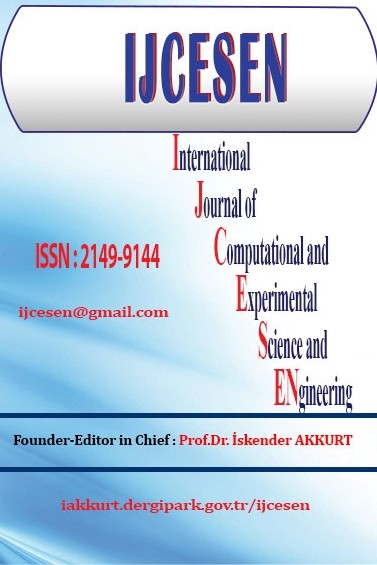Viscosity Change and its Effect on Pressure Distribution in Hydrodynamically Lubricated Journal Bearing
Viscosity Change and its Effect on Pressure Distribution in Hydrodynamically Lubricated Journal Bearing
___
- [1] O. Reynolds. On the theory of lubrication and its application to Mr. Beauchamps Tower’s Experiments, including an experimental determination of the viscosity of olive oil. Philosophical Transactions of the Royal Society London, 177, pp. 157-23, 1886.
- [2] J. Sep. Three dimensional hydrodynamic analysis of a journal bearing with a two component surface layer. Tribology International, 38, pp. 97-104, 2005.
- [3] R.M. Mane and S. Soni. Analysis of Hydrodynamic Plain Journal Bearing. Expert from the proceedings of the 2013 COSMOL conference in Bangalore.
- [4] G. Tom, K.R. Rajagopal, S. Rolf, and V. Juha. Nonlinear Reynolds equation for hydro dynamic lubrication. 39, pp. 5299-5309, 2015.
- [5] A. Verma, and S.S. Samant. Inspection of Hydrodynamic Lubrication in Infinitely Long Journal Bearing with Oscillating Journal Velocity. Journal of Applied Mechanical Engineering, 5, pp. 1-7, 2016.
- [6] S. Hamdavi, H.H. Ya, T.V.V.L.N. Rao, and K.M. Faez. An analytical approach to investigate the effect of grooved surface on short journal bearing’s performance. ARPN Journal of Engineering and Applied Science, 11(20), pp. 12045-12049, 2016.
- [7] Budynas−Nisbett, Shigley’s Mechanical Engineering Design, Eighth Edition, McGraw-Hill, 2008.
- [8] P.D. Shinde and P.N. Nagare. Experimental Evaluation of Performance Parameters of Journal Bearing Operating in Boundary/ Mixed Lubrication Regimes. International Advanced Research Journal in Science, Engineering and Technology, 2nd International Conference in Advance Mechanical Engineering (ICAME-2016), 3(1), pp. 116-120, 2016.
- [9] Manojkumar, Shamburaje and Rameshwar. CFD analysis of elasto hydro-dynamic lubrication journal bearing using castor oil and bronze material. International Journal of Advance Research and Innovative Ideas in Engineering, 2(2), pp. 56-67, 2016.
- [10] J.N. Reddy, Introduction to the Finite Element Method, Second edition, McGraw-Hill series in Mechanical Engineering. 1993.
- Yayın Aralığı: 4
- Başlangıç: 2015
- Yayıncı: Prof.Dr. İskender Akkurt
Excitation Functions for the Proton Irradiation on 45ScTarget
Susan SHUKUR NOORI, İskender AKKURT, Nurdan Karpuz DEMIR
Unimodal Optimization of Axially Compressed Shear Deformable Columns
Shuang ZHANG, Huiqing LIU, Jie BAI
Full reference video quality evaluation using foveated vision and multiple fixation points
Mario VRANJEŠ, Snježana RİMAC-DRLJE, Denis VRANJEŠ
Experimental Raman study of N-phenyl-3-para nitrophenyl isoxazolidine-5-carbonitrile
Karima BOUDHAR, Mahdi DEBIECHE
Investigation of Various Infectious Diseases in Turkey by Mathematical Models SI and SIS
Guessoum MELİA, Chelghoum NADJAT, Haddaoui NACERDDİNE
Environmental Radiation Doses from Patients Undergoing Tc-99m DMSA Cortical Renal Scintigraphy
Osman GÜNAY, Mucize SARIHAN, Evrim ABAMOR, Onur YARAR
A Framework for Query Optimization Algorithms for Biological Data
